Form Drills that Improve Your Running Mechanics
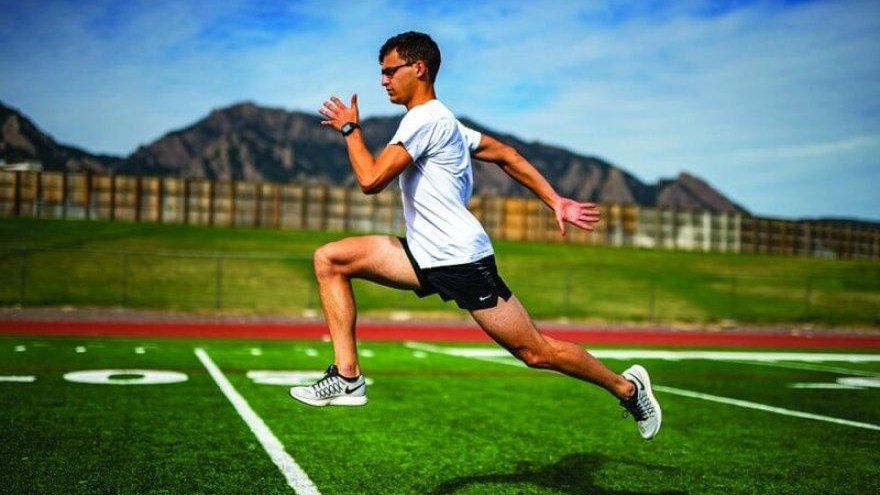
To runners with an already chock-full life schedule, adding “little things” like form drills to training might seem superfluous. Maybe you’ve tried a regimen of form drills before but fell away because you forgot to do them or they took too much time. I have.
Practicing form drills consistently is worth your time. The good news is that you can do an effective set of form drills that improve your speed, range of motion, and durability in only five minutes, if done four to five days a week. We’re aiming for consistency and quality here, not quantity. For these, you won’t need any hurdles or fancy equipment – just a stretch of level ground.
The best time to do form drills is just before and just after your run, when you’re out there exercising anyway!

What good are form form drills?
Form drills accomplish a number of objectives:
1. Drills are an active form of stretching
They over exaggerate the regular motions of running, increasing the range of motion in your muscles and focusing on proper positioning of limbs during running.
2. Drills improve proprioception, or body awareness
They force you to maintain balance and good posture, teaching your nervous system how to react in times of imbalance on uneven surfaces and fatigue during longer and harder running.
3. They improve power and speed
Drills target your prime mover muscles – the glutes, hamstrings, quadriceps, lower back, and core complex – strengthening them and adding to the power of your stride.
4. They help prevent injury
All of the above benefits of form drills means you start and finish training having already prepared your muscles, tendons and ligaments for the stress of running. Adding form drills to your training routine is one of best ways to help reduce the risk of getting hurt.
Here are my favorite form drills that improve your running mechanics:
Pre-Run Form Drills
Pre run form drills help you limber up and prepare to run. They aren’t meant to be overly explosive.
The A Skip
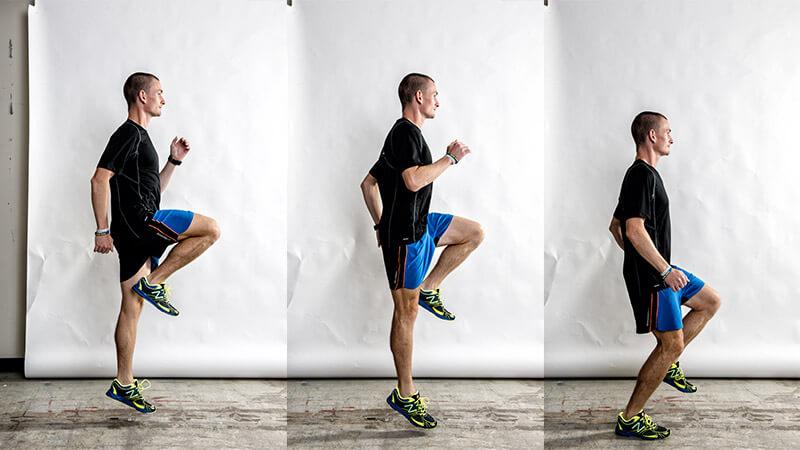
The A skip is a great pre-run form drill. Starting in a standing position, drive one knee upward so your thigh is parallel to the ground, pause, and drive the knee down again. Your lower leg hangs downward through the entire motion. Repeat with the other leg in a constant skipping rhythm, moving forward slowly. Focus on dorsiflexion: flexing your foot upward, reaching your toes toward your shin. Your feet should plant right under your hips, immediately underneath your center of gravity.
While skipping, exaggerate the motion in your arm carriage . Keeping your elbows bent at 90 degrees, bring your hands up to shoulder height and down to hip level.
The A Skip actively stretches the hamstrings and strengthens the hip flexors, quads, core, and lower legs. It helps you practice good foot plant and take off.
Do two sets of six to eight A skips on each leg.
The B Skip
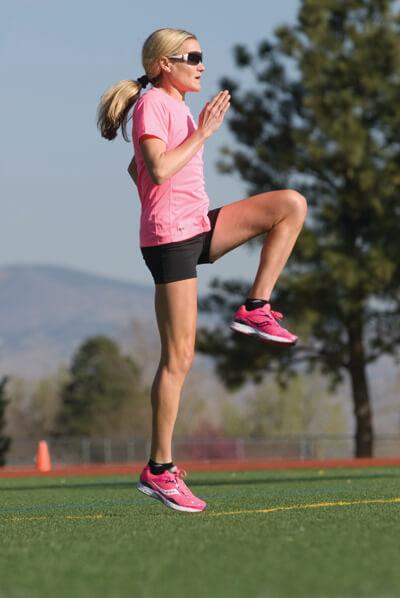
The ‘B’ Skip is the same motion as the ‘A’ Skip, except that instead of letting your lower leg hang straight down, you extend your lower leg forward and snap it backward and downward on each skip. Focus on bringing your foot back to the ground quickly and planting on the balls of your feet. Remember to maintain dorsiflexion during the upward and downward phases of the skip.
The ‘B’ skip additionally works the hamstring and calf during the outward and downward snapping motion.
Do two sets of six to eight skips on each leg.
Backwards Running
If your friends think backwards running looks silly, tell them you’re running backward in time and it’s making you faster. Remember to stay tall with a slight forward lean.
Backwards running works the hamstrings and glutes in different ways than normal running does, strengthening them and helping you cover more ground when you run forward.
Run backwards for two sets of 40 yards before you run.
Post Run Form Drills
Post run form drills involve more aggressive and explosive movements, taking advantage of your by now warmed up and loose muscles.
High Knees
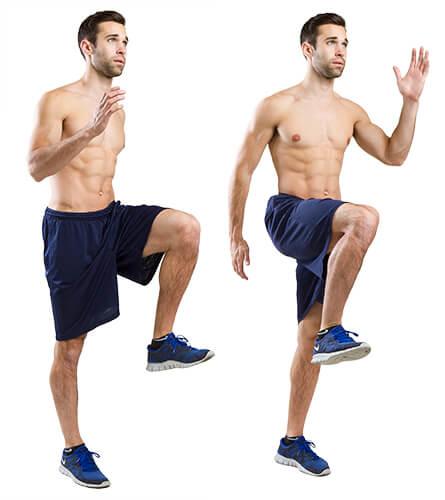
Begin by running in place, moving forward slowly. Gradually bring your knees higher and higher on each stride until your thighs are paralleling the ground. Stay on the balls of your feet. Maintain dorsiflexion on the upstroke motion. Lean back slightly if it helps bring your knees up.
High Knees are an excellent way to improve power in your glutes, quads, and hamstrings. They target many of the muscles associated with fast running. Sprinting coaches are constantly telling their athletes to bring their knees up! You might not be a sprinter, but keeping knee drive in mind will improve your speed.
Do two sets of 10 to 15 yards of high knees, slowly moving forward, after your run.
Butt Kicks
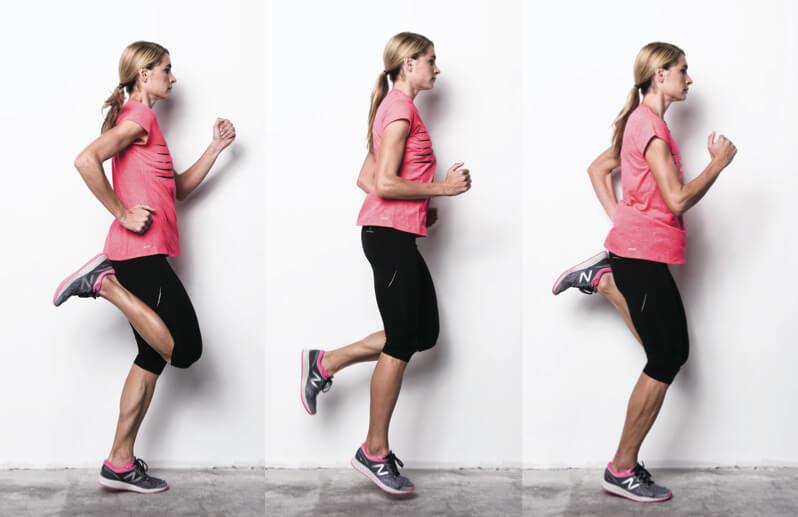
Running in place, keep your thighs vertical, your knees low, and snap your heels up toward your rear, moving forward slowly. Try to touch your heels to your butt. If you can’t, keep working on this form drill! You might notice that you have an easier time getting one heel closer to your rear than the other. If so, focus on stretching the hip flexors and quadriceps on that side.
Butt kicks help open up your leg’s rearward extension by stretching the quads and hip flexors, encouraging a longer and more efficient stride. They strengthen the glutes and hamstrings, adding to your stride power.
Do two sets of 10 to 15 yards butt kicks after your run.
Straight Leg Bounds

Starting from a standing position, run forward slowly, keeping your legs completely straight. Imagine your legs are long levers, the motion coming from the hips. Focus on aggressively snapping your legs back and planting your feet quickly to move to the next stride. You should maintain an upright posture throughout the drill.
Straight leg bounds target your hip flexors, glutes, and lower back especially.
Do two sets of 10 to 15 yards high knees after your run.
Find a way to comfortably add these six form drills into your daily training routine. If you remain consistent with them, after a while you’ll begin to notice yourself feeling better as you start your runs, and more recovered afterward. Once you’ve mastered these form drills, you can begin adding more reps.
Happy form drilling!
Latest Articles
 Is Running on a Treadmill Easier Than Running Outside?Runners have their own preferences, whether it is treadmill running, running outside on the road, or exploring trails. So...
Is Running on a Treadmill Easier Than Running Outside?Runners have their own preferences, whether it is treadmill running, running outside on the road, or exploring trails. So... Is It OK to Use Trail Running Shoes on the Road?While trail running shoes can be used on roads, especially in situations where a runner encounters mixed terrains or pref...
Is It OK to Use Trail Running Shoes on the Road?While trail running shoes can be used on roads, especially in situations where a runner encounters mixed terrains or pref... How to Fix Sore Quads After Running?Rest, ice, gentle stretching, and over-the-counter pain relievers can help soothe sore quads after running. Also, ensure ...
How to Fix Sore Quads After Running?Rest, ice, gentle stretching, and over-the-counter pain relievers can help soothe sore quads after running. Also, ensure ... 10 Fruits With The Most Electrolytes to Replace Sports DrinksThese fruits are high in electrolytes such as potassium, magnesium, and calcium, essential for hydration, muscle function...
10 Fruits With The Most Electrolytes to Replace Sports DrinksThese fruits are high in electrolytes such as potassium, magnesium, and calcium, essential for hydration, muscle function...

